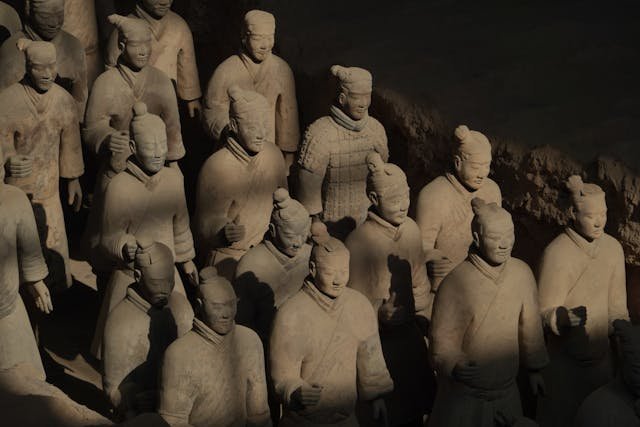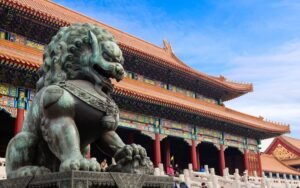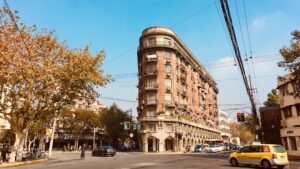Traveling offers one of the most immersive ways to learn a new language and understand a culture deeply. If you’re planning a trip to China, visiting the Terracotta Army in Xi’an provides a unique opportunity to learn and practice Chinese in a historical context. This comprehensive guide will provide you with essential vocabulary, phrases, grammar points, and cultural insights to enrich your experience at this iconic site.
Table of Contents
ToggleThe Terracotta Army: A Brief Introduction
The Terracotta Army (兵马俑, Bīngmǎyǒng) is one of China’s most significant archaeological discoveries, and it draws millions of visitors from around the world each year. Discovered in 1974 by local farmers in Lintong District, Xi’an, Shaanxi Province, this vast collection of terracotta sculptures represents the armies of Qin Shi Huang (秦始皇, Qín Shǐ Huáng), the first Emperor of China. These life-sized figures were buried with the emperor in 210–209 BCE to protect him in the afterlife.
Historical Context
The Terracotta Army is a form of funerary art. The figures, including warriors, chariots, and horses, were buried in three pits near the emperor’s tomb, which is part of a much larger necropolis. The craftsmanship and scale of the army are awe-inspiring, reflecting the emperor’s power and the advanced skills of artisans over 2,000 years ago.
Archaeological Significance
The discovery of the Terracotta Army has provided historians and archaeologists with invaluable insights into the military practices, cultural norms, and daily life of ancient China. Each figure is unique, with different facial features, expressions, and armor, illustrating the meticulous work that went into their creation.
Essential Vocabulary and Phrases
Before your visit, it’s helpful to familiarize yourself with basic Chinese vocabulary and phrases related to the Terracotta Army and travel. Here’s a list of words and phrases that will be particularly useful:
Vocabulary List
- 兵马俑 (Bīngmǎyǒng) – Terracotta Army
- 秦始皇 (Qín Shǐ Huáng) – Emperor Qin Shi Huang
- 西安 (Xī’ān) – Xi’an
- 博物馆 (Bówùguǎn) – Museum
- 遗址 (Yízhǐ) – Archaeological site
- 导游 (Dǎoyóu) – Tour guide
- 照片 (Zhàopiàn) – Photo
- 纪念品 (Jìniànpǐn) – Souvenir
- 门票 (Ménpiào) – Ticket
- 地图 (Dìtú) – Map
- 古老的 (Gǔlǎo de) – Ancient
- 壮观的 (Zhuàngguān de) – Magnificent
- 入口 (Rùkǒu) – Entrance
- 出口 (Chūkǒu) – Exit
- 展览 (Zhǎnlǎn) – Exhibition
- 休息区 (Xiūxí qū) – Rest area
- 厕所 (Cèsuǒ) – Restroom
- 咖啡馆 (Kāfēi guǎn) – Café
- 餐厅 (Cāntīng) – Restaurant
- 商店 (Shāngdiàn) – Shop
Basic Travel Phrases
- 你好 (Nǐ hǎo) – Hello
- 谢谢 (Xièxiè) – Thank you
- 请 (Qǐng) – Please
- 对不起 (Duìbuqǐ) – Sorry
- 多少钱 (Duōshǎo qián) – How much?
- 厕所在哪里? (Cèsuǒ zài nǎlǐ?) – Where is the restroom?
- 我迷路了 (Wǒ mílù le) – I am lost
- 可以帮我吗? (Kěyǐ bāng wǒ ma?) – Can you help me?
Phrases Related to the Terracotta Army
- 我想买门票 (Wǒ xiǎng mǎi ménpiào) – I would like to buy a ticket.
- 这个有多古老? (Zhège yǒu duō gǔlǎo?) – How old is this?
- 请问,兵马俑在哪里? (Qǐngwèn, Bīngmǎyǒng zài nǎlǐ?) – Excuse me, where is the Terracotta Army?
- 这里可以拍照吗? (Zhèlǐ kěyǐ pāizhào ma?) – Can I take pictures here?
- 你能介绍一下这个吗? (Nǐ néng jièshào yīxià zhège ma?) – Can you introduce this (explain about this) to me?
- 我需要一张地图 (Wǒ xūyào yī zhāng dìtú) – I need a map.
- 这附近有咖啡馆吗? (Zhè fùjìn yǒu kāfēi guǎn ma?) – Is there a café nearby?
- 我想买纪念品 (Wǒ xiǎng mǎi jìniànpǐn) – I would like to buy a souvenir.
Grammar Points Related to the Topic
Understanding grammar is crucial for effective communication. Here are some key grammar points related to the topic:
Word Order
Chinese sentence structure typically follows the Subject-Verb-Object (SVO) pattern, similar to English. For example:
- 我 (wǒ) – I (subject)
- 想 (xiǎng) – would like (verb)
- 买门票 (mǎi ménpiào) – buy a ticket (object)
So, “I would like to buy a ticket” in Chinese is 我想买门票 (Wǒ xiǎng mǎi ménpiào).
Questions
To form a question in Chinese, you can add the particle 吗 (ma) at the end of a statement:
- 这是兵马俑 (Zhè shì Bīngmǎyǒng) – This is the Terracotta Army.
- 这是兵马俑吗? (Zhè shì Bīngmǎyǒng ma?) – Is this the Terracotta Army?
For more specific questions, use question words like:
- 什么 (shénme) – what
- 哪里 (nǎlǐ) – where
- 谁 (shéi) – who
- 为什么 (wèishéme) – why
Example:
- 兵马俑在哪里? (Bīngmǎyǒng zài nǎlǐ?) – Where is the Terracotta Army?
Measure Words
Chinese nouns require measure words (量词, liàngcí) when used with numbers or demonstratives. Common measure words include:
- 个 (gè) – general measure word, used for people or objects in general
- 尊 (zūn) – used for statues, like the terracotta figures
Example:
- 一尊兵马俑 (Yī zūn Bīngmǎyǒng) – one terracotta warrior
Describing Objects and Actions
Use descriptive adjectives and verbs to talk about the Terracotta Army:
- 古老的 (gǔlǎo de) – ancient
- 壮观的 (zhuàngguān de) – magnificent
- 看 (kàn) – to see/look
- 参观 (cānguān) – to visit
Example:
- 这些兵马俑很壮观 (Zhèxiē Bīngmǎyǒng hěn zhuàngguān) – These terracotta warriors are magnificent.
- 我们参观兵马俑 (Wǒmen cānguān Bīngmǎyǒng) – We visit the Terracotta Army.
Expressing Need and Want
Understanding how to express needs and desires is crucial for travel. Use 要 (yào) for “want” and 需要 (xūyào) for “need”:
- 我要一本指南 (Wǒ yào yī běn zhǐnán) – I want a guidebook.
- 我需要帮助 (Wǒ xūyào bāngzhù) – I need help.
Cultural Insights
Understanding cultural nuances can greatly enhance your visit. Here are some tips:
Respect for History
The Terracotta Army is a symbol of China’s rich history and culture. Show respect by not touching the exhibits and following the rules. Speaking quietly in museums and at archaeological sites is also appreciated.
Language Etiquette
Even basic attempts to speak Chinese can be greatly appreciated by locals. It shows respect and interest in their culture. Here are a few tips to make your attempts more effective:
- Speak slowly and clearly.
- Use polite forms such as 请 (qǐng) for “please” and 谢谢 (xièxiè) for “thank you”.
- Be patient and smile, as a friendly attitude can bridge many gaps.
Photography
Always check if photography is allowed. Some areas may prohibit flash photography to protect the artifacts. Look for signs or ask a guide if you are unsure.
Engaging with Locals
Engaging with locals can be one of the most rewarding aspects of your visit. Practice your Chinese by asking questions, ordering food, or purchasing souvenirs. Most people will appreciate your effort and may even help you with pronunciation and vocabulary.
Chinese Idioms and Proverbs
Using idioms and proverbs can make your conversations more engaging. Here are a few related to history and exploration:
- 读万卷书,行万里路 (Dú wàn juǎn shū, xíng wàn lǐ lù) – “Read ten thousand books and travel ten thousand miles.” This means that both learning from books and experiencing the world are important.
- 百闻不如一见 (Bǎi wén bùrú yī jiàn) – “Hearing something a hundred times isn’t as good as seeing it once.” This emphasizes the importance of firsthand experience.
- 前事不忘, 后事之师 (Qián shì bù wàng, hòu shì zhī shī) – “The past, if not forgotten, serves as a guide for the future.” This highlights the value of learning from history.
Practical Tips for Learning Chinese on Your Visit
- Take Notes: Carry a small notebook to jot down new words and phrases you encounter. Writing helps reinforce memory and provides a handy reference.
- Engage with Locals: Don’t be afraid to practice your Chinese with locals. They will appreciate your effort and might even help you improve. Simple interactions, such as ordering food or asking for directions, can be very beneficial.
- Join a Tour: Guided tours in Chinese can provide contextual language practice and deeper insights into the Terracotta Army. Listening to a guide can help you learn new vocabulary and understand sentence structures.
- Listen and Repeat: Pay attention to how locals speak and try to mimic their pronunciation and intonation. Repetition helps with retention and improving your accent.
- Use Context Clues: Even if you don’t understand every word, use context clues such as gestures, facial expressions, and surrounding objects to infer meaning.
Conclusion
Visiting the Terracotta Army in Xi’an is not just a journey through ancient Chinese history but also an excellent opportunity to practice and improve your Chinese language skills. With this guide, you are well-equipped to make the most of your trip. Embrace the language, respect the culture, and enjoy the rich historical tapestry of China.
祝你旅途愉快!(Zhù nǐ lǚtú yúkuài!) – Have a great trip!







